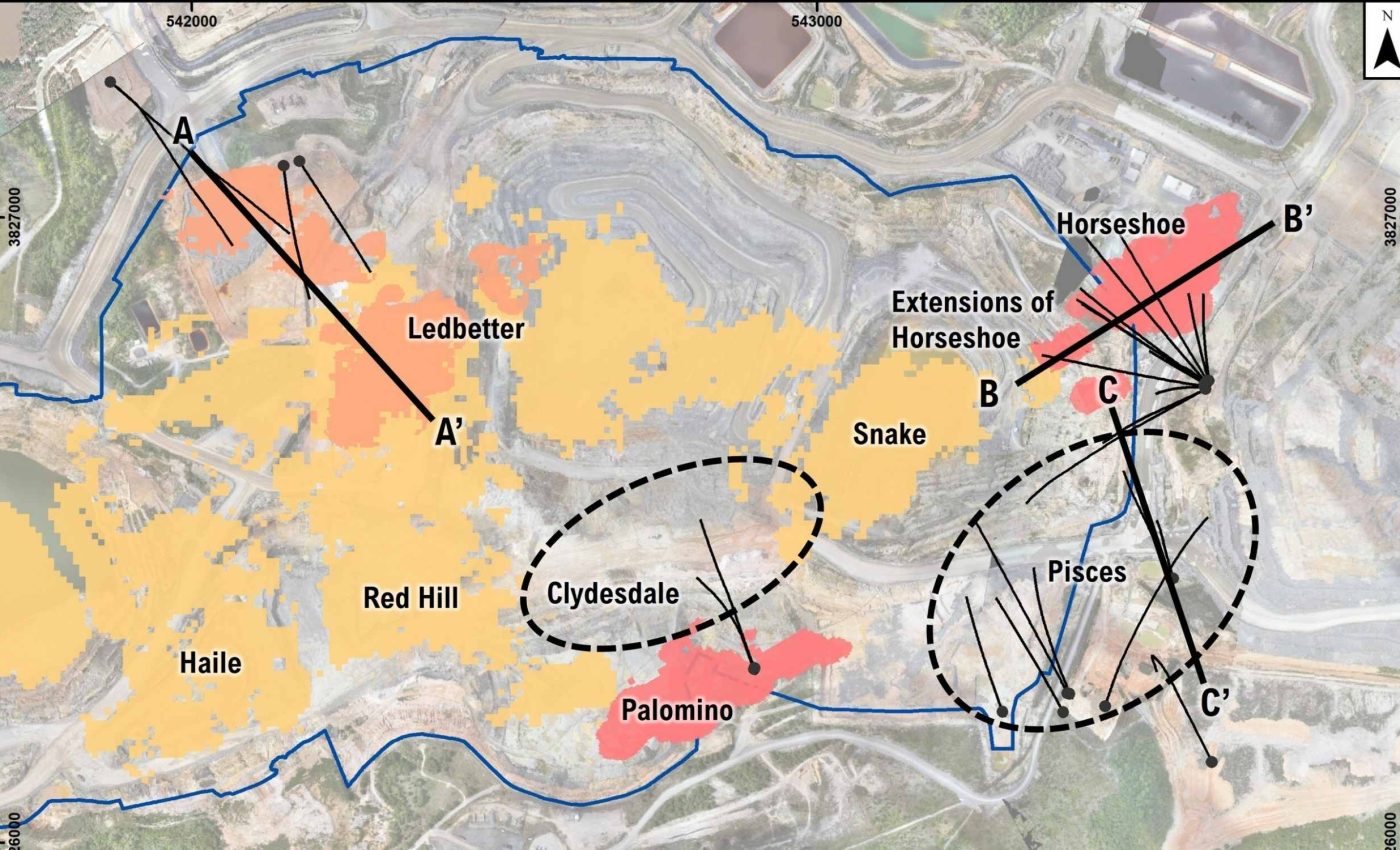
High-purity gold found in South Carolina
Exploration drilling at the Haile Gold Mine in Kershaw, South Carolina, cut a 95 foot interval averaging about 0.53 ounces of gold per ton. The core finding is that the ore remains rich across meaningful thickness.
Several nearby holes at Horseshoe and at early targets also returned strong runs across tens of feet. The company is testing zones near existing workings to extend mine life at workable cost.
Gold in South Carolina
The Ledbetter deposit, the main open-pit ore body at Haile, delivered the standout interval, and Horseshoe added 53 feet at about 0.48 ounces per ton in a separate hole.
Pisces and Clydesdale added shorter but notable hits, including about 25 feet at 0.30 ounces per ton and 86 feet at 0.12 ounces per ton, respectively.
These numbers point to continuity across different parts of the ore system. A peer reviewed study on the mine’s hydrothermal minerals helps explain why rich zones can persist in this belt.
“These exciting results continue to demonstrate the continuity of high-grade mineralization at several deposits across the property,” said Gerard Bond, President and CEO of OceanaGold.
Here, the team is doing resource conversion, drilling that upgrades confidence in known ore so engineers can plan stops and schedules with fewer surprises. That work lowers risk when a mine shifts from open pits to targeted underground blocks.
What the grades and feet tell us
Canadian mining disclosure follows NI 43-101, which sets the rules for what companies can say about deposits. The framework keeps language consistent across projects and countries.
Under NI 43-101, an indicated resource can guide early mine design. Companies later turn those blocks into reserves after more drilling and economic checks.
An inferred resource, an estimate based on limited data with higher uncertainty, is useful for exploration targeting. Conversion drilling like this aims to lift material from inferred to indicated, step by step.
Converting highlights to U.S. units helps scale the results. The 95 foot Ledbetter run averages about 0.53 ounces per ton, while a Horseshoe hole grades about 0.48 ounces per ton over 53 feet.
From open pit to underground
OceanaGold lays out mine context in its Haile technical report, which describes open pits alongside Horseshoe and Palomino underground areas. The document also outlines infrastructure that supports step outs under current pits.
At Ledbetter, recent holes probed down dip around 1,600 feet and 1,230 feet below surface. Those depths sit below the final open pit shape and line up with areas that could be mined by underground methods.
Pisces, a zone between Horseshoe and Palomino, shows a higher grade corridor about 492 feet long. That strike length, the distance a mineralized zone runs along a trend, remains open toward Horseshoe.
Short distances between these zones matter for capital. Underground ramps and drifts that serve one area can often serve the next, keeping development tight and lowering haul times.
How the samples are tested
Labs measure gold with assay methods called fire assay, a high temperature process that concentrates precious metals from pulverized rock. Many programs use a 30 gram charge, then finish with atomic absorption or a precise gravimetric step when grades are high.
Independent labs publish their scopes and meet an international lab accreditation standard to show competence for specific procedures. Those scopes list fire assay methods and instruments covered by the certificate.
Sampling discipline helps numbers stand up to scrutiny. Blank samples, certified standards, and duplicates are inserted on a fixed schedule so analysts can spot bias or contamination quickly.
Quality control like this is not a formality. Tight QA keeps the grade distribution honest, which matters when engineers convert resources and schedule development headings.
What this gold means for South Carolina
Haile sits within the Carolina Slate Belt, a long belt of volcanic and sedimentary rocks that hosts several major deposits. The district includes historic mines like Ridgeway and Brewer, with Haile the largest in the eastern United States.
South Carolina’s gold story is not ancient history. Modern mills, water management systems, and underground designs let operators target deeper zones that were out of reach for past miners.
Practical implications start with feed quality and development sequencing. Long, rich intervals at Ledbetter and Horseshoe can supply the mill while teams extend footprints underground in measured steps.
Regulators and investors watch the same thing, repeatability. NI 43-101 insists on clear categories and competent review, and that keeps the focus on data rather than hype.
—–
Like what you read? Subscribe to our newsletter for engaging articles, exclusive content, and the latest updates.
Check us out on EarthSnap, a free app brought to you by Eric Ralls and Earth.com.
—–













